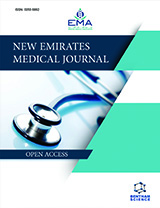Abstract
Background: Adenoid and tonsil surgeries are the most commonly done surgical procedures, with haemorrhage being an important complication. Fatalities due to haemorrhage almost never occur, but the occasional devastating outcomes that are life-threatening become a frequent source of litigations and audits. Catastrophic bleeds are usually due to an aberrant vessel or carotid protruding in the pharyngeal airway. The aberrant carotid poses a risk during routine pharyngeal surgeries like adenoidectomy, tonsillectomy, Quincy and Para-pharyngeal abscess drainage, UPPP, pharyngeal biopsies, etc. and injuries during routine pharyngeal surgical procedures can be catastrophic due to massive bleeding.
Case report: We report two cases of routine Adeno-tonsillectomy surgeries where aberrant carotid vessels protruding in the adeno-tonsil surgical area were identified by endoscopic transoral evaluation intraoperatively. The surgery in these cases was postponed for further investigation due to the risk of injury and catastrophic bleeding.
Conclusion: Aberrant carotids are usually clinically silent, and adenoid removal in most cases is a blind procedure done by curettage. There are no guidelines to identify aberrant vessels pre or intraoperatively, and preventing injury and catastrophic bleeding depends on surgeon’s experience and caution.
These cases underline the importance of due vigilance and taking steps before starting the procedures, particularly pre-and intraoperative transoral endoscopic assessment for identifying aberrant vessels in the upper airway area, thus preventing injury and avoiding devastating complications. We report these cases and underline the steps to identify aberrant vessels in the upper airway surgical field before starting surgery to prevent a potentially catastrophic complication.
Keywords: Carotid, Aberrant, Tonsil, Adenoid, Tonsillectomy, Adenoidectomy, Adenotonsillectomy, Surgery.
[http://dx.doi.org/10.1016/j.otohns.2008.11.012] [PMID: 19201287]
[http://dx.doi.org/10.1016/S0140-6736(00)52698-1]
[http://dx.doi.org/10.1177/00034894041130S301] [PMID: 15053213]
[http://dx.doi.org/10.1046/j.1469-7580.2000.19730373.x] [PMID: 11117624]
[http://dx.doi.org/10.1186/1746-160X-3-29] [PMID: 17650347]
[PMID: 7499165]
[http://dx.doi.org/10.4236/act.2013.21006]
[http://dx.doi.org/10.1007/s00405-007-0398-6] [PMID: 17638001]
[http://dx.doi.org/10.1016/j.anl.2011.10.018] [PMID: 22341333]
[http://dx.doi.org/10.2174/1874440001004010174] [PMID: 21283647]
[http://dx.doi.org/10.1017/S0022215100026955]
[PMID: 5493402]
[http://dx.doi.org/10.1001/archotol.1989.01860280117029] [PMID: 2923696]
[http://dx.doi.org/10.1177/019459987908700201] [PMID: 503482]
[http://dx.doi.org/10.1002/lary.23393] [PMID: 22614949]
[http://dx.doi.org/10.1258/0022215021910591] [PMID: 11945195]
[http://dx.doi.org/10.5144/0256-4947.2002.344] [PMID: 17146259]
[http://dx.doi.org/10.1186/1746-160X-4-20] [PMID: 18727830]
[http://dx.doi.org/10.1007/s00276-006-0149-1]
[http://dx.doi.org/10.1016/j.ijporl.2014.04.028] [PMID: 24791679]































